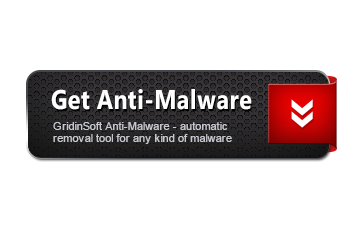The Trojan.Agent.EUHF is considered dangerous by lots of security experts. When this infection is active, you may notice unwanted processes in Task Manager list. In this case, it is adviced to scan your computer with GridinSoft Anti-Malware.

Gridinsoft Anti-Malware
Removing PC viruses manually may take hours and may damage your PC in the process. We recommend using GridinSoft Anti-Malware for virus removal. Allows to complete scan and cure your PC during the trial period.
What Trojan.Agent.EUHF virus can do?
- Executable code extraction
- Injection (inter-process)
- Injection (Process Hollowing)
- Presents an Authenticode digital signature
- Creates RWX memory
- Mimics the system’s user agent string for its own requests
- Possible date expiration check, exits too soon after checking local time
- A process attempted to delay the analysis task.
- Expresses interest in specific running processes
- Repeatedly searches for a not-found process, may want to run with startbrowser=1 option
- A process created a hidden window
- Drops a binary and executes it
- Performs some HTTP requests
- The binary likely contains encrypted or compressed data.
- Uses Windows utilities for basic functionality
- Executed a process and injected code into it, probably while unpacking
- A system process is generating network traffic likely as a result of process injection
- Installs itself for autorun at Windows startup
- Checks the version of Bios, possibly for anti-virtualization
- Checks the CPU name from registry, possibly for anti-virtualization
- Attempts to modify proxy settings
- Creates a copy of itself
- Collects information to fingerprint the system
- Anomalous binary characteristics
Related domains:
www.ip-adress.com |
How to determine Trojan.Agent.EUHF?
File Info:
crc32: 8FC5BCA1md5: f1fba0e7f6609228ead9765f64c250a7name: upload_filesha1: bd258eeb41a14d6aae2e002b18176d04e5dd837bsha256: 9d9d3aafbde00c81e5678c5e3db562a1bb950752b3e631bb1e112b3d615cb579sha512: 1e668059c24ebaef2412bab355b33a94114c37b0f418b2e660043331e499017be662b2345035977f8252c2e4259da7a965c70b5f84ef1c6d9c69a46f9913fb05ssdeep: 6144:e5GtlTjRFYH83s+mTabn88i4FAuYZsyTouRYtEy+23Pq/OaIU+BHoa8mSpPah8iK:g+BFNcjGXnyuGtM/6OID9SMRFDacAKtype: PE32 executable (GUI) Intel 80386, for MS WindowsVersion Info:
LegalCopyright: Copyright (C) 2011-2012 CrystalIDEA SoftwareInternalName: x64helperFileVersion: 3, 1, 0, 0CompanyName: CrystalIDEA SoftwareComments: Unikstall Tool Helper for x64 systemsProductName: Unikstall ToolProductVersion: 3, 1, 0, 0FileDescription: Unikstall Tool Helper for x64 systemsOriginalFilename: x64helper.exeTranslation: 0x0000 0x04b0
Trojan.Agent.EUHF also known as:
| Bkav | W32.AIDetectVM.malware2 |
| MicroWorld-eScan | Trojan.GenericKD.34258037 |
| McAfee | Packed-GCB!F1FBA0E7F660 |
| Cylance | Unsafe |
| Sangfor | Malware |
| Cybereason | malicious.7f6609 |
| Arcabit | Trojan.Generic.D20ABC75 |
| F-Prot | W32/Kryptik.BRZ.gen!Eldorado |
| Symantec | ML.Attribute.HighConfidence |
| APEX | Malicious |
| BitDefender | Trojan.GenericKD.34258037 |
| Rising | Trojan.Kryptik!8.8 (RDMK:cmRtazrVOAXYMkO8hVjiXSdXUbZW) |
| Endgame | malicious (high confidence) |
| Sophos | Mal/EncPk-APV |
| Invincea | heuristic |
| Trapmine | malicious.high.ml.score |
| Emsisoft | Adware.Generic (A) |
| Cyren | W32/Kryptik.BRZ.gen!Eldorado |
| Antiy-AVL | GrayWare/Win32.Kryptik.ehls |
| Microsoft | Trojan:Win32/Qakbot.RQ!MTB |
| GData | Trojan.GenericKD.34258037 |
| Cynet | Malicious (score: 100) |
| AhnLab-V3 | Trojan/Win32.Qakbot.C4171878 |
| Acronis | suspicious |
| VBA32 | BScope.Trojan.Zenpak |
| ALYac | Trojan.Agent.EUHF |
| MAX | malware (ai score=82) |
| Ad-Aware | Trojan.GenericKD.34258037 |
| ESET-NOD32 | a variant of Win32/Kryptik.HFGB |
| SentinelOne | DFI – Malicious PE |
| eGambit | PE.Heur.InvalidSig |
| Fortinet | W32/GenKryptik.EOHS!tr |
| BitDefenderTheta | Gen:NN.ZexaF.34142.JG1@aGlI47i |
| CrowdStrike | win/malicious_confidence_100% (D) |
| Qihoo-360 | HEUR/QVM19.1.E8EC.Malware.Gen |
How to remove Trojan.Agent.EUHF?
- Download and install GridinSoft Anti-Malware.
- Open GridinSoft Anti-Malware and perform a “Standard scan“.
- “Move to quarantine” all items.
- Open “Tools” tab – Press “Reset Browser Settings“.
- Select proper browser and options – Click “Reset”.
- Restart your computer.



Leave a Comment